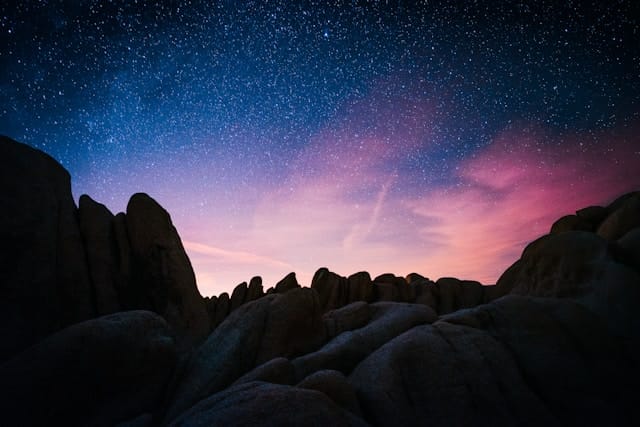Mapping the sky at night is a captivating pursuit that connects us to the cosmos. This guide aims to equip you with the adequate knowledge and skills necessary to effectively map the sky at night. By understanding star charts, celestial coordinates, and advanced techniques, you’ll deepen your appreciation for the universe and enhance your stargazing experiences. Whether you’re a beginner or a seasoned enthusiast, the joy of identifying constellations, tracking celestial movements, and witnessing astronomical events awaits you. Join us as we embark on this astronomical journey, exploring the wonders above while learning how to map the sky at night.
1. The Importance of Mapping the Sky at Night
Mapping the sky at night is essential for anyone interested in astronomy. It allows us to identify celestial objects and understand their movements. With star charts, we can learn about constellations, planets, and other deep-sky phenomena, enriching our experiences as we observe the cosmos.
1.1. Historical Significance
Understanding the historical significance of mapping the sky at night can provide a deeper appreciation for the practice. Ancient civilizations relied heavily on celestial navigation for agriculture, travel, and religious practices. By examining the stars, they were able to create calendars that dictated when to plant and harvest crops. As a result, the knowledge gained from mapping the sky at night has shaped cultures and societies throughout history.
1.2. Modern Implications
In today’s world, mapping the sky at night continues to play a crucial role in various fields, including navigation, environmental science, and space exploration. For instance, satellites and spacecraft utilize celestial navigation to orient themselves in space. Additionally, understanding the night sky can foster interest in science and technology among the younger generation, inspiring future astronomers and scientists.
2. Types of Star Charts
2.1 Standard Star Charts
When you first start to map the sky at night, standard star charts are invaluable tools. They provide basic representations of constellations and major stars, making it easier to navigate the night sky. These charts typically include seasonal indicators and labeled constellations.
2.1.1. Finding Your First Constellations
To get started, focus on easily recognizable constellations like the Big Dipper, Orion, and Cassiopeia. The Big Dipper can help you locate Polaris, the North Star, which is pivotal for navigation.
2.2 Detailed Star Charts
As you gain experience, transitioning to detailed star charts will enhance your observations. These charts contain comprehensive information about fainter stars and deep-sky objects, enabling you to explore the universe more thoroughly. Familiarizing yourself with these tools is key to effectively map the sky at night.
2.2.1. Resources for Detailed Star Charts
Many resources are available online and in bookstores for acquiring detailed star charts. Websites like Stellarium offer downloadable charts and interactive tools that can help you understand celestial phenomena in real-time.
2.3 Interactive Star Maps
In the digital age, interactive star maps have revolutionized how we map the sky at night. Mobile apps and software allow real-time visualization of the sky, using augmented reality to help users identify stars and constellations. These tools are great for both beginners and advanced stargazers.
2.3.1. Recommended Apps
Some highly rated apps include:
- SkySafari: Offers extensive databases and detailed information about stars, constellations, and celestial events.
- Star Walk: User-friendly interface ideal for beginners; offers real-time tracking and notifications about celestial events.
3. Understanding Celestial Coordinates
3.1 Right Ascension and Declination
To accurately map the sky at night, it’s crucial to understand celestial coordinates. Right Ascension (RA) is akin to longitude, measured in hours, minutes, and seconds, while Declination (Dec) is similar to latitude, expressed in degrees. Knowing how to use these coordinates will help you locate celestial objects efficiently.
3.1.1. Practical Applications of Celestial Coordinates
Understanding celestial coordinates can enhance your stargazing experience in various ways. For example, if you’re looking for a specific star or planet, using RA and Dec allows you to input the coordinates into a telescope or an app to locate it precisely.
3.2 Using Star Charts with Celestial Coordinates
To map the sky at night effectively, you’ll need to correlate star charts with celestial coordinates. Familiarize yourself with how to read both the star chart and the coordinates simultaneously. Practice by selecting specific stars or constellations and finding their corresponding coordinates.
4. Techniques for Mapping the Sky at Night
4.1 Choosing the Right Time and Location
Selecting the right time and place for stargazing significantly enhances your ability to map the sky at night. Aim for dark, clear nights away from city lights to enjoy optimal viewing conditions. Websites like Clear Dark Sky can help you find ideal locations and times for stargazing.
4.1.1. Seasonal Considerations
Different seasons present unique opportunities for stargazing. For example, winter often offers clearer skies and visibility of notable constellations like Orion and Taurus, while summer nights may showcase the Milky Way and summer constellations such as Scorpius and Sagittarius.
4.2 Orientation and Navigation
Before heading out to map the sky at night, familiarize yourself with how to orient yourself. Identify key directions (north, south, east, and west) using a compass. Holding your star chart correctly in relation to the sky will improve your navigation.
4.2.1. Using a Star Finder
A star finder is a helpful tool that allows you to align your position with the night sky. Many star finders are designed with a rotating disc that helps you identify constellations based on the date and time.
4.3 Recording Your Observations
Keeping a stargazing journal is an excellent way to document your experiences while mapping the sky at night. Record details about the conditions, the celestial objects you observed, and any thoughts or questions you have.
4.3.1. Reflecting on Your Experiences
Reflection is key to growth as a stargazer. Over time, reviewing your observations can reveal patterns in your stargazing experiences, enhance your understanding, and encourage continued exploration.
5. Common Challenges in Stargazing
5.1 Light Pollution and Weather Conditions
Light pollution can be a significant barrier when you attempt to map the sky at night. Seek out dark sky locations or plan your observations during moonless nights. Always check weather conditions before heading out; flexibility is essential for successful stargazing.
5.1.1. Overcoming Light Pollution
While it may be challenging to find perfectly dark skies, you can mitigate light pollution’s effects by choosing your viewing times wisely and seeking out areas with less artificial light. Tools like the Light Pollution Map can help identify optimal locations for stargazing.
5.2 Dealing with Weather Variability
Weather can be unpredictable, so always check forecasts before planning your stargazing sessions. Be prepared to adapt your plans based on changing conditions. If you can’t observe the night sky due to clouds or rain, consider alternative activities, such as reading astronomy books or watching educational documentaries.
6. Advanced Techniques for Enthusiasts
6.1 Astrophotography
For those looking to deepen their engagement with the night sky, astrophotography is an exciting avenue. Learning to capture celestial images can enhance your appreciation of astronomical phenomena and provide a new way to share your experiences.
6.1.1. Essential Equipment for Astrophotography
To get started in astrophotography, you will need some basic equipment:
- Camera: A DSLR or mirrorless camera with manual settings is ideal.
- Tripod: A sturdy tripod is essential for stable shots.
- Lens: A wide-angle lens can capture expansive sky views, while a telephoto lens allows you to zoom in on specific celestial objects.
6.1.2. Basic Techniques
Learning techniques such as long exposure, stacking images, and post-processing can significantly enhance your astrophotography skills. Start by experimenting with simple shots of the Milky Way or constellations before progressing to more complex targets like nebulae and galaxies.
6.2 Engaging in Citizen Science
Mapping the sky at night isn’t just a personal hobby; it can also contribute to broader scientific efforts. Participate in citizen science projects that involve stargazing, such as contributing to databases that track variable stars or meteors.
6.2.1. Finding Citizen Science Projects
Organizations like Zooniverse and The American Association of Variable Star Observers (AAVSO) offer platforms where amateur astronomers can contribute their observations and data to real scientific research.
7. Resources for Mapping the Sky at Night
7.1 Online Resources
Numerous websites and apps are available to assist you in mapping the sky at night. Some of the most popular include:
- Sky & Telescope: Offers articles, star charts, and guides to upcoming celestial events.
- NASA’s Eyes on the Solar System: A visualization tool that allows users to explore the solar system and beyond in real-time.
7.2 Books and Literature
Books are another great resource for learning how to map the sky at night. Some recommended reads include:
- “NightWatch: A Practical Guide to Viewing the Universe” by Terence Dickinson: A comprehensive guide to astronomy with practical tips for stargazing.
- “The Stars: A New Way to See Them” by H.A. Rey: A classic that offers a unique perspective on star identification.
7.3 Local Astronomy Clubs
Joining a local astronomy club can greatly enhance your stargazing experience. These clubs often host star parties, workshops, and lectures that provide valuable insights and networking opportunities with fellow enthusiasts. Additionally, experienced members can offer guidance on effectively mapping the sky at night.
Conclusion
In conclusion, mapping the sky at night is a fulfilling journey that enhances your connection to the cosmos. By understanding various star charts, celestial coordinates, and effective techniques, you can embark on an exciting adventure into the night sky. This pursuit not only nurtures curiosity about the universe but also offers countless opportunities for learning and discovery. As you continue your astronomical explorations, remember that each observation is an opportunity to learn and grow. Enjoy your journey into the stars!






